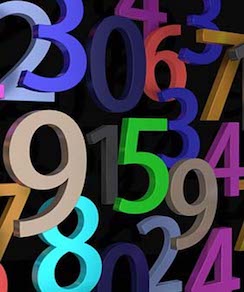On February 2nd, the Illinois STEM Education Colloquium hosted Dr. Martha W. Alibali, a Vilas Distinguished Achievement Professor from the University of Wisconsin-Madison. The event was co-Sponsored by the Mathematics, Science, & Engineering Education program in the Department of Curriculum and Instruction, MSTE, and the University Library. Dr. Alibali’s lecture was titled “Understanding Change in Mathematical Thinking: A Perception-Action Perspective” and focused on answering the question of how children change their views of mathematical thinking. Dr. Alibali explained that a perception-based perspective is a perspective in which a focus on perception and action can enrich conceptions of mathematical thinking, learning, and instruction.
Dr. Alibali’s lecture began with a discussion of perceptual encoding of mathematical problems as a guide to problem-solving and correct strategy creation. Perceptual encoding refers to the way mathematical inscriptions or objects are perceived or seen, and it can be considered similar to visual perception. Perceptual encoding focuses on why people take the actions they do or why they interact the way they do. She offered that manipulations, such as grouping, dissimilarity, or perceptual salience, can affect the way a mathematical problem is approached to include improved encoding, generation of new and correct strategies, and a reduction in errors.
Dr. Alibali also focused on the role of physical actions in mathematical thinking. She emphasized two main ideas: mathematical actions (e.g., adding, subtracting, and dividing) are grounded in physical actions, and physical actions affect mathematical thinking. Reflecting on the work of Lakoff and Johnson (1980), she stated that concepts can be understood through familiar actions or experiences. As evidence for this grounding, Dr. Alibali offered the use of gestures as simulated physical actions or metaphors to facilitate students’ learning. She also discussed how physical actions affect mathematical thinking, in that the use of physical actions provides prompts or queues to learners.
To her final point, Dr. Alibali discussed how instructional interactions guide learners’ perceptions and actions. She drew a connection to instruction educating perception, in that teachers do things that educate encoding. She asserted that instructors choose activities that instruct children to act in particular ways and use manipulations that afford particular action. Further, instructors use gestures such as pointing or highlighting to identify salient materials. These gestures can be used to show connections, through pointing, between one concept to another. Dr. Alibali also eluded to increased gesturing when students encounter “trouble spots” when completing mathematics problems as a means of guiding them to success.
While Dr. Alibali’s lecture focused on children, a perception-action perspective can also be used to address how community college students’ views of mathematical thinking change. Students’ perceptions of mathematics have the ability to affect how they interact with and approach mathematics, especially for students progressing from developmental math through calculus courses. For college students, perception matters—not just perception of mathematical ability but also of mathematics’ purpose, relevance, and future use. The perception-action perspective presents both a challenge to and an opportunity for community college professors in that they can influence how students approach mathematics.
For example, by manipulating the way students encode mathematics problems, professors can affect the way students strategize and approach problem solving in mathematics, especially students who enroll in courses such as developmental education. The use of grouping and salience positioning challenges the way students perceive a mathematical problem. Physical actions, classroom instruction, and interactions may have a significant impact on student interest and understanding. For example, creating a physical activity that simulates a mathematical problem may affect the way a student thinks about a problem. Designing classroom instruction and activities in a way that students can relate to can help students identify and build connections to topics that will be expanded in advance courses (e.g., pre-calculus and calculus). This is important, as most math is buildable, meaning you have to master one topic before you can master another. If students are able to build connections between the topics, their perceptions of mathematics can lead to an increase in desirable actions. Additionally, the way in which information is presented (e.g., lecture, group work, etc.) and the way students can relate to it can guide students’ perceptions of what is important and what actions should be taken. This is also where culturally responsive pedagogy can be used to affect student perception, in that integrating culturally relevant topics such a pop culture and sports can build relatability.
There were several key takeaways from Dr. Alibali’s lecture, the first being that perception cannot be ignored. Perception matters in mathematics and how students experience mathematical problems. The second is that physical actions are involved in the way we think about mathematics and impact how students approach and complete mathematical problems. Last, classroom instruction and the use of gestures guide students’ perceptions and their actions. In thinking about college students, I offer the following questions for reflection:
- How do community college students’ views of mathematical thinking change?
- How can implementing a perception-action perspective advance community college students’ thinking of mathematics, especially in developmental math, pre-calculus, and calculus?
- In what ways do you guide your students’ perceptions and actions as related to mathematics?
References
Lakoff, G., & Johnson, M. (1980). Metaphors we live by. Chicago: University of Chicago Press.




Leave a comment